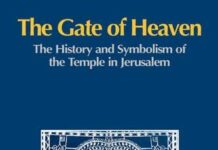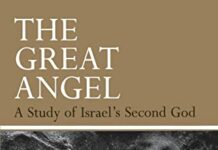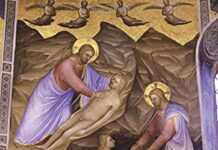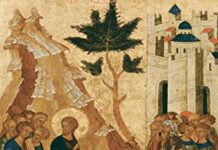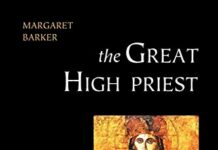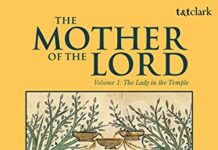
Ebook Info
- Published: 2012
- Number of pages: 194 pages
- Format: PDF
- File Size: 1.33 MB
- Authors: Margaret Barker
Description
According to Margaret Barker’s groundbreaking theory, temple mysticism underpins much of the Bible. Rooted in the cult of the first temple in ancient Judaism, it helps us to understand the origins of Christianity. Temple mysticism was received and taught as oral tradition, and many texts were changed or suppressed or kept from public access. Barker first examines biblical texts: Isaiah, the prophet whom Jesus quoted more than any other in Scripture, and John. Then she proposes a more detailed picture, drawing on a wide variety of non-biblical texts. The resulting book presents some remarkable results.
User’s Reviews
Reviews from Amazon users which were colected at the time this book was published on the website:
⭐A fascinating book, which collects together many of the results of Margaret Barker’s work on Temple Mysticism over the years. I found her insights into changes made in the Hebrew text that became the Masoretic version when compared with the Qumran Hebrew texts and the Greek Septuagint to be especially interesting. Her thesis that the idea of the possibility of direct meeting with God through his manifestations in the time of the first temple, and before, was suppressed by post-exilic returnees from Babylon deserves consideration. It helps in understanding the subsequent conflict between what became rabbinic Judaism and Christianity, which Barker claims is the successor to Temple Mysticism. As with other books of Barker I have read, she leaves me wondering what she actually believes about Jesus. Was he simply a man in the tradition of the Temple Mystics, whose followers believed to be much more or was he in reality the manifestation of God, first as the Great Angel in the Old Testament and then as the Son of Man and Son of God in the New Testament?
⭐Highly recommended to anyone who wants to know more about the Israelite temple and how it was deliberately altered from the sixth century onward. Highly recommended to all LDS Church members as well…Barker (without saying it directly) has vindicated Joseph Smith and provided impressive evidence that Joseph not only restored true Christianity but also restored the ancient temple ordinances.
⭐This, Temple Theology and The Mother of the Lord are my favorite books by Margaret Barker. I wish I had read this one earlier. Next up, I recommend reading King of the Jews to continue understanding this vein of scholarship. In fact, she ends Temple Mysticism with a foreshadowing of John’s account of the condemnation of Christ. Read this one to better understand the temple motifs in the New Testament and in the life of the Savior and his disciples.
⭐This book lays out a compelling series of thoughts that seem to reconcile much of the more puzzling aspects of the Christian Bible. Through a rational and detailed scholarship, the author has compiled another excellent thesis for believing in the life of Christ. The mysticism implied by this theory seems intense, where the reader may want to make sure they are grounded by a trustworthy faith community if they were to seek even further into what this book ponders.
⭐Having spent most of my life in spiritual studies and practice as it relates to Judeo-Christian scripture I can honestly say this was the best book I have ever read. It has endless gems for the avid meditator and mystic. While definitely not a light read it bridges the gap between theancient religion of Melchizadek and modern encounters with the Man who wears the golden belt around his waist and whose eyes are like fire. It also has plenty of food for thought for the deep thinker and well researched to ponder regarding ancient religions from a multitude of cultures from the priest kings of Egypt to the circling of the Kaaba in Islam. Can’t recommend this work high enough.
⭐Twinned with “Temple Theology” – which establishes the basics of Dr Barker’s hypothesis of the First Temple origins of Christianity for a general audience – “Temple Mysticism” lays out the central symbols of a temple view and connects them to the earliest Christian teaching. I found this absolutely compelling and fascinating. Some of Dr Barker’s longer, more scholarly books can be difficult to follow for a lay audience, but this is well-structured, closely argued and accessible, even though it relies on a similar vast corpus of sources (the list of source passages occupies a decent fraction of the end pages). Unmissable.
⭐Halfway through the first chapter, I looked up and thought, “Well, now I’d better go read the whole Bible again. Half my notes on it are now incomplete or obsolete.” That’s the sign of a great read!I do wish Dr. Barker would back up her assertions a little more, but that’s really what the more academic works are for. This is for high-level perspective and it works brilliantly.
⭐Shaking up many previous paradigms about the Bible and the ancient temple, Margaret Barker’s book draws upon many sources and hints that cumulatively support a bold new thesis and make sense of many puzzling elements in the past. Early Jewish traditions rooted in the first temple may have been largely stamped out by Josiah and his reformers. Understanding what those traditions and perspectives were and how they continued to have some influence or relevance much later helps us better grasp the early success of Christianity and the message of Christ, whether or not you are Christian. It also helps us better understand the ancient prophetic tradition among the Jews and what they were after. Not necessarily rules and law, but entering the presence of God. Fascinating.
⭐I give this book a solid four stars for readability and for gathering together in a short work the evidence for the old Hebrew religion that was largely obscured since the destruction of the Jerusalem Temple in AD 70, except for the most part within the liturgies of the Christian Church. Subjects covered include the triumph of the God-man as high-priest and the One Who appears as a ‘son of man’ and is enthroned on high, the ongoing vitality of the Holy of Holies within the Temple (now without the physical presence of the Temple), and the meaning of the sacrificial cult of the Temple (spectacularly the Day of Atonement sacrifices, now only manifested by the ongoing re-presentation of the one Sacrifice of Christ). Gnostic texts are often used, and speculations presented about the personification of Wisdom in what remains of the ancient texts – speculations that are useful in rediscovering the old religion of the Hebrews before the Jewish Temple religion was developed in the centuries before Christ and certainly before the new settlement of the Jewish rabbinic religion that was developed after AD 70. Christianity reaches far beyond these, in many ways beyond even Moses, to the distant past, in order to restore the original covenant with God that mankind enjoyed, and lost through sin. And that’s where Temple mysticism becomes very intriguing and the person of Christ shines forth anew as the new Adam, the man from the beginning.
⭐I found this interesting and although I’m not entirely convinced by all of Dr. Barker’s arguments, I do feel she is onto something.I would say that this is not light reading, and does demand concentration. I’d also suggest having a Bible handy if you want to look up the numerous quotes in the book.I would recommend this to those who want to know the basics of Temple Mysticism, or who have an interest in the roots of Christianity and ancient Judaism.
⭐well researched and a fascinating read
⭐A very informative book. I enjoyed reading this book and it gave a lot of information about the running of the Temple. I have been to Jerusalem often and love its history.
⭐Excellent.
Keywords
Free Download Temple Mysticism: An Introduction in PDF format
Temple Mysticism: An Introduction PDF Free Download
Download Temple Mysticism: An Introduction 2012 PDF Free
Temple Mysticism: An Introduction 2012 PDF Free Download
Download Temple Mysticism: An Introduction PDF
Free Download Ebook Temple Mysticism: An Introduction
